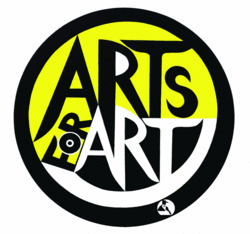Date: Friday, June 15, 2012
Venue: the Roulette
Reviewed by Matt Cole
 One of the many interesting things about the New York City jazz scene is that it is large enough to have a number of separate sub-scenes that have little overlap between performers (and quite possibly audience, though that is much harder to quantify). While this can certainly feel like cliquishness at times, I suspect that a fairly large part of it is that people have only so much time available, and can devote themselves to only so many bands; thus there is a natural tendency to fall into somewhat vaguely-defined groups. This doesn’t, of course, remove the danger of insularity and diminishing musical cross-fertilization. At any rate, this phenomenon can be seen by contrasting the recent 17th Vision Festival with last winter’s Winter Jazzfest — two events with very different lineups and to a certain extent musical feels. Yet, both events can be put under the aegis of modern jazz. The crowds were different, too: Winter Jazzfest had a younger crowd which seemed right at home in the West Village venues which it calls home, while the Vision Festival has a formal, almost classical feel to it, complete with the occasional shushing (though to be fair, there was some seriously pianissimo music at times).
One of the many interesting things about the New York City jazz scene is that it is large enough to have a number of separate sub-scenes that have little overlap between performers (and quite possibly audience, though that is much harder to quantify). While this can certainly feel like cliquishness at times, I suspect that a fairly large part of it is that people have only so much time available, and can devote themselves to only so many bands; thus there is a natural tendency to fall into somewhat vaguely-defined groups. This doesn’t, of course, remove the danger of insularity and diminishing musical cross-fertilization. At any rate, this phenomenon can be seen by contrasting the recent 17th Vision Festival with last winter’s Winter Jazzfest — two events with very different lineups and to a certain extent musical feels. Yet, both events can be put under the aegis of modern jazz. The crowds were different, too: Winter Jazzfest had a younger crowd which seemed right at home in the West Village venues which it calls home, while the Vision Festival has a formal, almost classical feel to it, complete with the occasional shushing (though to be fair, there was some seriously pianissimo music at times).
This year’s Vision Festival took place largely in Roulette’s still-fairly-new and very nicely refurbished space in downtown Brooklyn, not far from the new Barclay’s Center. Most of the crowd was seated in the floor/orchestral section, while a few came up to the balcony, where we sat. There were two painters, one on the floor near the stage and the other on the right side of the balcony, live-painting during the music.
The first act that we saw was Yoshiko Chuma, a dancer, described in the program as “…a postmodern choreographer, a movement designer, or a visual artist whose primary medium is human beings—dancers, musicians, and pedestrians…” She was accompanied by Akihito Obama on shakuhachi (Japanese bamboo flute) and Roy Campbell on trumpet. Her dancing varied between poses, slow movements and bursts of almost violent action. It was at times graceful, and at times jerky, almost like that staple of ’80s flashback movies, The Robot. Roy Campbell moved about a bit as well while playing, and Chuma occasionally used him as a prop, or fellow dancer, depending on how one views it. The music was fairly varied: the trumpet playing ran the gamut from avant-noise to bluesy, and the shakuhachi went from long tones and spaces to more aggressive playing. Many times, only one instrument was playing. At the end of her performance, Chuma asked the crowd if they knew of Fukushima, of Hiroshima, of the Manhattan Project, of Bikini Island. She then spoke a little on the potential re-activation of Japan’s nuclear reactors, and TEPCO’s various deceptions. Over all, it was an interesting performance; perhaps better experienced from the floor seats.
Next up were Henry Grimes (bass, violin) and Wadada Leo Smith (trumpet). While both are accomplished performers, the duo tonight was a little disappointing. Their individual performances were for the most part very well done, Grimes in particular with his breadth of technique and some very imaginative playing, but it felt for the most part that the two musicians were playing over or along side each other, rather than together, with little or no connection (this was coideomented on by several audience members). Most of the audience, though, did seem to dig the performance.
Last up was Pheeroan akLaff and his band (Jun Miyaki on tenor sax and shakuhachi, Santi Debriano on double bass and electric guitar, akLaff on percussion and vocals, and Angelica Sanchez on piano and voice) playing his Dear Freedom Suite, with Amiri Baraka on spoken word. The music started out on a funky beat with some piano dissonance, and Baraka started reading right away. His microphone was not always loud enough relative to the band, so one sometimes had to strain to hear his words. The first words covered freedom-related themes over hundreds of years, while behind the band the word “freedom” in many languages was projected onto a screen. AkLaff sang a few times during the set from behind his kit, and Baraka also spoke more on various themes of freedom, Africa, and our potential better selves.
In all, while there were some excellent individual performances and some great music made, Friday night at the Vision Festival left me wanting more. For a night of ‘free’ music, it felt almost academic at times. Still, it is nice to see that there is a reasonably flourishing scene of avant-jazz-based music, for when such music is at its best, it can be quite inspirational.

